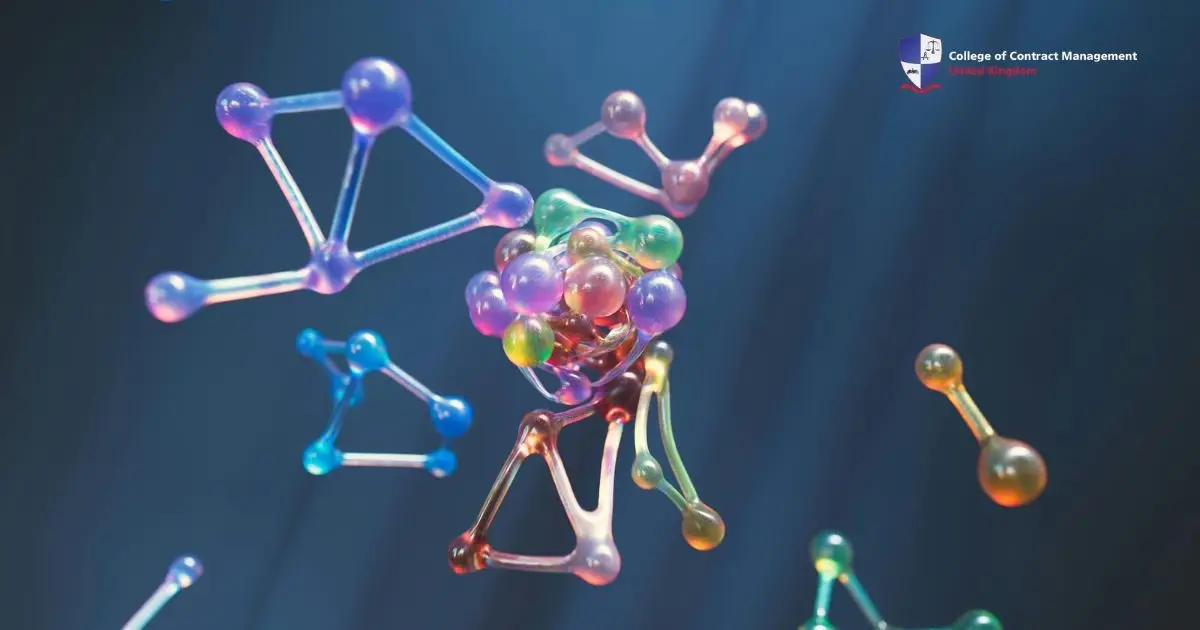The atomic structure has been one of the most researched areas in physics and chemistry. Democritus, the Greek philosopher, argued that all things consist of small, invisible bits called atoms. He derived the word “atom” from the Greek atomos, meaning “indivisible.” Democritus held that atoms varied in size and could combine or separate, marking the first known use of the term.
Now, researchers are exploring and expanding on the notion of the atomic structure. Nevertheless, a scientist, meteorologist and physicist named John Dalton. He was the first to mention that everything is made up of atoms in the book he published in 1808. Therefore, we are going to delve into the history of the structure.
What is Atomic structure?
The atomic structure is where the tiny parts of an atom are arranged. The nucleus, at the centre of the atom, holds positively charged protons and neutral neutrons. Around the nucleus move negatively charged electrons in regions known as orbitals or electron clouds. These parts work together to determine how an element behaves in chemical reactions and bonding.
Every element’s identity comes from its unique number of protons, called the atomic number. Neutrons add mass but no charge, and electrons form the links between atoms in molecules. Understanding atomic structure shows how atoms stick together to make the compounds around us. This is the foundation of all chemistry.
History of Atomic structure
The atomic structure inventor is a great chemist named John Dalton. People speculated about atoms for centuries before understanding their structure. In the 5th century BCE, Leucippus of Miletus proposed the idea of atoms. Around 430 BCE, his student Democritus named these building blocks “atoms,” meaning indivisible. He envisioned atoms as tiny solid spheres, with each element’s atoms differing only in size and relative mass.
He also suggested that those atoms move around in space when collisions between the spheres occur, they can rebound or stick together, thus making changes to the matter of the material. His model consists of solid spheres of different sizes for different types of atoms.
The Greek theory is significant historically and philosophically, but it was not based on observations of nature, measurements, tests, or experiments. Instead, the Greeks used mathematics and reason almost exclusively when they wrote about physics. Because of the influence of Aristotle, who did not agree with Democritus and other proponents of atomic philosophy, this theory was ignored for nearly 2,000 years. Furthermore, let us go deeper into the history of the atomic structure in the modern era.
John Dalton discovery
Between 1803 and 1808, English scientist John Dalton built on Greek ideas to create the atomic structure theory. In his 1808 work A New System of Chemical Philosophy, he explained how atoms combine to form compounds and argued that atoms exist. His insights, along with contributions from Gay Lussac and Avogadro, laid the foundations for atomic studies. A summary of his findings is as follows:
- All matter consists of extremely small particles called atoms.
- Atoms are indestructible and resist change. Dalton states that atoms cannot be made, destroyed, divided into smaller pieces or transformed into atoms of other elements. He used the law of conservation of mass in the late 1700s as the basis for these conclusions.
- Scientists characterise elements by the mass of their atoms. Dalton stated that all atoms of an element share the same shape, size, and mass.
- Atoms participate in chemical reactions by combining in small whole-number ratios to form molecules. Dalton proposed that two types of atomic structure could combine in different whole-number ratios to produce distinct molecules.
The Thomson Atomic model
After the groundbreaking discovery of Dalton with its atomic structure model, it opened the floodgates with experiments. Thus, multiple experiments were performed that proved that charged particles exist. In 1897, English physicist J.J. Thomson discovered a negatively charged particle, which he called the electron. The existence of the electron showed that the 2,000-year-old idea of the atom as one solid particle was wrong. In fact, the structure is much more complex.
Thomson noted that the Dalton model of the atom doesn’t include the idea of charge. It theorised that the electrons must be within the atoms of elements. Hence, he thinks that electrons must be in the atoms' elements. He used his discovery to strongly support his so-called plum pudding model of atomic structure, that was first proposed by Lord Kelvin.
The model is called that because there were pockets of negative charges within the sphere of the atom. The advantage of the Thomson atom was that it was inherently stable. If the electrons were displaced, they would return to their original positions. This theory held pretty long until there was a new advancement in this field.
The Rutherford Atomic model
In 1911, a student of Thomson’s, New Zealand-born physicist, Ernest Rutherford. In cooperation with other scientists performed an experiment that led to the discovery that changed the atomic structure theory again. They aimed alpha particles at a thin sheet of gold foil and then recorded the location of the alpha particle with a fluorescent screen after the interaction.
It found that the majority of the alpha particles passed through the gold foil as if the foil were not there. They also found that a very small number of these alpha particles deflected at angles from the initial path, with some of the alpha particles even bouncing back along the initial path.
He concluded that there is a small, dense core of matter in the atomic structure from which the particles were bouncing. He theorised that the electrons orbited around it. A lot of scientists doubted this finding, and modes as it was difficult to match with the chemical behaviour of the elements. The model suggested that the charge of the nucleus was the most important characteristic of the atom, determining its structure.
The Bohr Atomic model
In 1913, only 2 years after the Rutherford findings. A Danish physicist, Niels Bohr, a student of Rutherford, gave his theory of the quantised shell model of the atomic structure. This is to explain how electrons can have an orbit around the core. The movement of electrons in the previous model was unstable due to classical mechanics and electromagnetic theory. Thus, stating that any charged particle moving on a curved path emits radiation, it makes electrons lose energy and spiral into the core.
To fix this issue, Bohr changed the Rutherford model by requiring that the electrons move in orbits of fixed size and energy. The energy of an electron depends on the size of the orbit and is lower for smaller orbits. Radiation can occur only when the electron jumps from one orbit to another. The atomic structure will be completely stable in the state with the smallest orbit since there is no orbit of lower energy into which the electron can jump.
Bohr has suggested that each orbit has a slightly different energy. The distance from the nucleus determines the forces acting on the electrons in the various orbits or shells. His findings show that electrons can absorb energy to move from a lower energy orbit to a higher orbit, thereby releasing energy. However, despite a number of modifications to the model, by the early 1920s, Bohr’s model seemed to be a dead end, as efforts to generalise the model to multi-electron atoms had proved futile.
Quantum Atomic model and modern theory
In 1926, Austrian physicist Erwin Schrödinger introduced a way to think about electrons. Instead of pinpointing their locations, he used mathematical equations called wavefunctions to describe the probability of finding an electron in various regions around the nucleus. This approach formed the basis of quantum mechanics and replaced the idea of fixed electron orbits. This groundbreaking development influences the world of atomic structure.
Six years later, in 1932, English physicist James Chadwick discovered a neutral particle in the nucleus with a mass similar to that of the proton. He called this particle the neutron. Finding the neutron filled a gap in our model of the atom, confirming that atoms consist of three main particles: electrons, protons, and neutrons.
Quantum mechanics evolved, and in the 1960s, physicists discovered quarks. Protons are made of two “up” quarks (each carrying a +2/3 elementary charge) and one “down” quark (−1/3 charge). Neutrons contain one up quark and two down quarks, giving them no overall charge. That is what we know so far regarding the atomic structure, and there is more research to be done and discoveries to be made.
Join UNICCM to learn more!
Dalton established atoms as fundamental blocks; reactions rearrange them. Thomson discovered electrons and positive particles (neutrons) using CRTS. Rutherford's gold foil experiment revealed the nucleus. Subsequent experiments developed a modern atomic structure, characterised by a periodic table.
If you're looking to take your career to the next level, enrolling at the College of Contract Management is perfect. With a range of courses for all levels of experience, you'll gain the skills, knowledge, and certification for the industry. The flexible learning options allow you to study at your own pace while receiving practical insights. So, why wait? Enrol today and start your journey to a brighter career!





